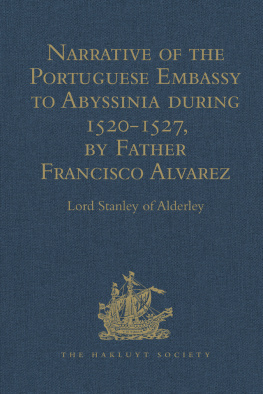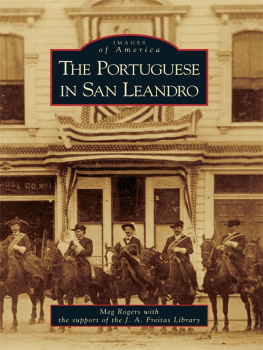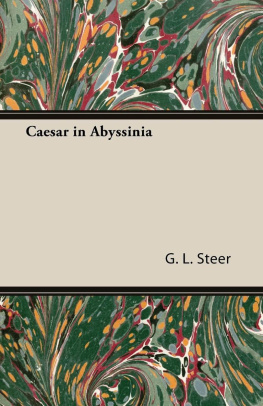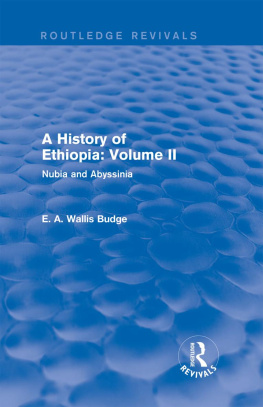First published by Ashgate Publishing
Published 2016 by Routledge
2 Park Square, Milton Park, Abingdon, Oxon OX14 4RN
711 Third Avenue, New York, NY 10017, USA
Routledge is an imprint of the Taylor & Francis Group, an informa business
All rights reserved. No part of this book may be reprinted or reproduced or utilised in any form or by any electronic, mechanical, or other means, now known or hereafter invented, including photocopying and recording, or in any information storage or retrieval system, without permission in writing from the publishers.
Notice:
Product or corporate names may be trademarks or registered trademarks, and are used only for identification and explanation without intent to infringe.
Founded in 1846, the Hakluyt Society seeks to advance knowledge and education by the publication of scholarly editions of primary records of voyages, travels and other geographical material. In partnership with Ashgate, and using print-on-demand and e-book technology, the Society has made re-available all 290 volumes comprised in Series I and Series II of its publications in both print and digital editions. For information about the Hakluyt Society visit www.hakluyt.com.
ISBN 13: 978-1-4094-1331-8 (hbk)
Publisher's Note
The publisher has gone to great lengths to ensure the quality of this book but points out that some imperfections from the original may be apparent.
WORKS ISSUED BY
The Hakluyt Society.
NARRATIVE OF THE PORTUGUESE EMBASSY TO ABYSSINIA.
No. I,XIV.
NARRATIVE
OF THE
PORTUGUESE EMBASSY
TO
ABYSSINIA
DURING THE YEARS 1520-1527.
BY
FATHER FRANCISCO ALVAREZ.
TRANSLATED FROM THE PORTUGUESE, AND EDITED,
With notes and an Introduction,
BY
LORD STANLEY OF ALDERLEY.
LONDON: PRINTED FOR THE HAKLUYT SOCIETY. XDCCCLXXXI.
T. RICHARDS, PRINTER, BY, GREAT QUEEN STREET.
Council of the Hakluyt Society.
- COLONEL H. YULE, C.B., PRESIDENT.
- ADMIRAL, C. R. DRTNKWATER BETHUNE, C.B.
- MAJOR-GENERAL, SIR HENRY RAWLINSON, K.C.B. VICE-PRESIDENTS.
- W. A. TYSSEN AMHERST, ESQ., M.P.
- Rev. G. P. BADGER, D.C.L.
- J. BARROW, ESQ.
- WALTER DE GRAY BIRCH. ESQ.
- B. A, BOND, ESQ.
- E. H. BUNBURY, ESQ.
- ADMIRAL SIR R. COLLINSON, K.C.B.
- THE EARL OF DUCIE.
- AUGUSTUS W. FRANKS, ESQ.
- CAPTAIN HANKEY, R.N.
- LIEUT.-GENERAL SIR J. HENRY LEFROY, C.B., K.C.M.G.
- R, H. MAJOR, ESQ.
- REAR-ADMIRAL MAYNE, C.B.
- DELMAR MORGAN, ESQ.
- ADMIRAL SIR ERASMUS OMMANNEY, C.B.
- LORD ARTHUR RUSSELL, M.P.
- THE LORD STANLEY OF ALDERLEY.
- EDWARD THOMAS, ESQ.
- LIEUT.-GENERAL SIR HENRY THUILLIER, C.S.I.
- CLEMENTS R. MARKHAM, C.B., HONORARY SECRETARY.
Introduction.
THE present work on Abyssinia is the earliest extant; for though Pedro de Covilham, the explorer of King John II, who was despatched from Portugal in May 1487, reached Abyssinia more than thirty years before our author, he does not appear to have left any written memorial of his long residence in that country.
This work of Francisco Alvarez has been translated from the original edition printed in black letter by Luis Rodriguez, bookseller of the King, on the 22nd October 1540, the British Museum Catalogue supposes at Coimbra.
The narrative of Alvarez has been translated into several languages, but most of these translations are considerably abridged. The following are a list of the translations:
" Viaggio fatta nella Ethiopia, Gbedienza data Papa Clemente Settimo in nome del Prete Gianni." Primo Volume delle navigazione. 1550. Fol.
" Viaggio nella Ethiopia, Ramusio." I vol. 1554.
" Description de l'Ethiopie." 1556. Fol.
"Historia de las cosas de Etiopia." Traduzida de Portugues en Castillano, por Thomas de Padilla. Anvers: Juan Steelsio, 1557. 8vo.
" Description de l'Ethiopie." Translated by J. Bellere, from the Italian version of Ramusio. Anvers: C. Plantin, 1558. 8vo.
" Historia de las cosas de Ethiopia." By Miguel de Suelves, Printed in black letter. Saragoza, 1561. Fol.
" Warhafftiger Bericht von den Landen .... des Knigs in Ethiopien." Eissleb, 1566. Fol.-- Another edition. Eissleb, 1576. Fol.
"Die Reiss zu dess Christlichen Knigs in hohen Ethiopien." 1576. Fol.
"Historia de las cosas de Ethiopia," traduzida por M. de Selves. Toledo, 1588. 8vo.
" The Voyage of Sir Francis Alvarez." Purchas, his Pilgrims, Part II. 1625.
Francisco Alvarez relates in this volume how much he desired, on his return to Portugal, to be sent on a mission to Rome, to present the Prester John's letters to the Pope, and it appears from the Portuguese Biographical Dictionary of Innocencio da Silva, that he succeeded in going to Rome, and afterwards returned to Lisbon.
Figaniere, and Jos Carlos Pinto de Souza say, in their Portuguese Bibliographies, that Alvarez was a native of Coimbra.
The utility and good effect of this Portuguese mission to Abyssinia suffered very much by the dissensions and quarrels which arose between Don ftodrigo de Lima, the Ambassador, and Don Jorge d'Abreu, the Secretary of Embassy, quarrels which, as usual in such cases, caused disunion amongst the whole staff of the Embassy. Father Alvarez acted a most useful part as peace-maker on all occasions; but he is very reticent, and has avoided saying upon which side the blame for these quarrels should be laid. It appears from the narrative that the Ambassador was very selfish, and thought too much of bis personal interests; his conduct appears all the more blameable, from the account of the very different conduct of Hector da Silveira, who brought away the mission from Africa; but Jorge d'Abreu was very quarrelsome, and carried his quarrels further than can be excused, even by the fact that he could not refer his complaints home to his Government. The conduct of the Ambassador must, however, have been even worse than appears from the narrative, or the Abyssinians would hardly have supported Jorge d'Abreu as much as they did.
The reader is invited to compare the description of the entrance to the mountain in which the Abyssinian Princes were confined at the time of our author's visit, at pp. 140-144, and the motives for this confinement, with this opening passage of Ras selas, describing the Happy Valley.
" The place which the wisdom or policy of antiquity had destined for the residence of the Abyssinian Princes was a spacious valley in the kingdom of Amhara, surrounded on every side by mountains, of which the summits overhang the middle part. The only passage by which it could be entered, was a cavern that passed under a rock, of which it has long been disputed whether it was the work of nature, or of human industry. The outlet of the cavern was concealed by a thick wood, and the mouth which opened into the valley was closed with gates of iron......
" This lake discharged its superfluities by a stream, which entered a dark cleft of the mountain on the northern side, and fell with dreadful noise from precipiee to precipice, till it was heard no more."
These descriptions agree sufficiently to leave no doubt that Johnson borrowed the idea of Rasselas from actual descriptions of Abyssinia, and from the translation of Alvarez in Purchas's Pilgrimes, when he wrote that work in 1759; but the matter is proved beyond doubt, by the fact that Johnson's first literary work was a translation from the French of Lobo's Voyage to Abyssinia. It was published in 1735, by Bettesworth and Hicks, of Paternoster Row, and for this task Johnson received only five guineas, which he was in want of for the funeral expenses of his mother.










